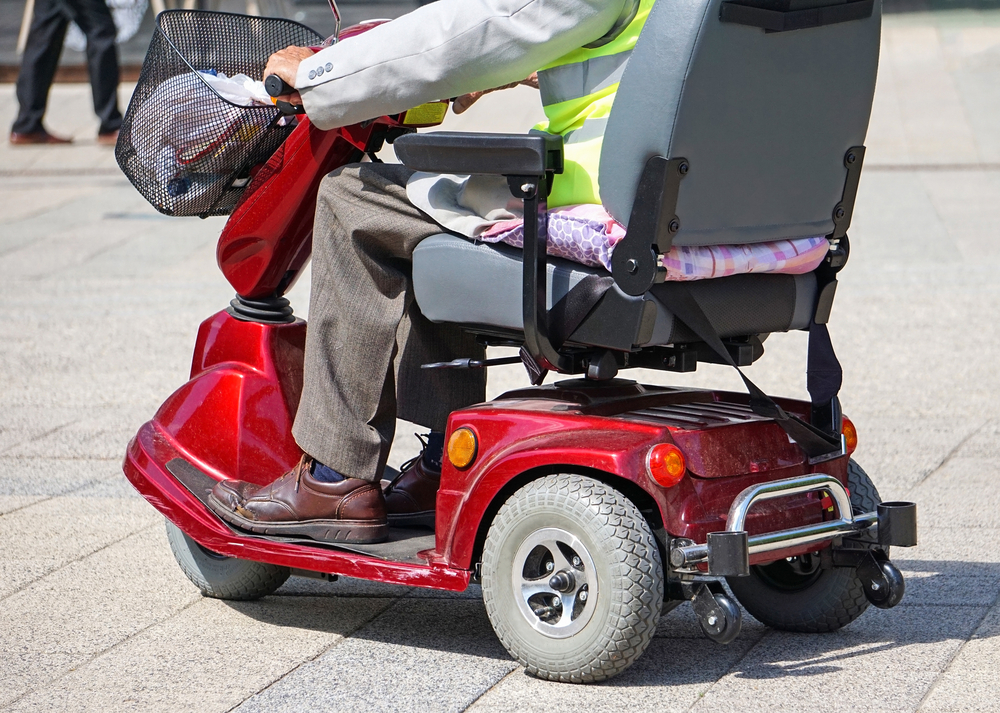Choosing the Right Kind of Mobility Aid for Your Needs
 If your mobility has begun to decline, it may be time to select the right mobility aid. But how do you know which mobility aid is right for you? Not only do you have to decide between walkers, wheelchairs, and mobility scooters, but each of these categories has subtypes of its own that you have to sift through to find the ideal mobility aid. If you’re struggling to find the right mobility aid for your needs, keep reading to learn more about the different types, their subtypes, and who they’re best suited for.
If your mobility has begun to decline, it may be time to select the right mobility aid. But how do you know which mobility aid is right for you? Not only do you have to decide between walkers, wheelchairs, and mobility scooters, but each of these categories has subtypes of its own that you have to sift through to find the ideal mobility aid. If you’re struggling to find the right mobility aid for your needs, keep reading to learn more about the different types, their subtypes, and who they’re best suited for.
Types of Walkers
Walkers are an ideal mobility solution for those whose early mobility decline has started to take a toll. They can provide some balance or moderate support for those who can get on their feet and move forward of their own volition, but can’t go far or are prone to stumbling, a walker may be exactly what you need. In essence, if you can lean on someone’s arm or grasp a nearby tabletop and move forward without much difficulty, then a walker is probably what you need.
However, walkers are not all created equal. There are several types, and getting the wrong type of walker can be just as bad as not getting a mobility aid at all. Here are the primary types of walkers and what situations they’re best suited to:
- Standard walkers – These are probably the ones that come to mind when you picture walkers; they have a simple metal frame and rubber caps on each foot (though you might picture them with tennis balls instead). These walkers are good to lean on if you need extra support. They’re steady and stable and won’t slide out from under you. However, you must move forward slowly with them, since you have to lift the walker, move it forward, and set it down again before stepping in between the handles once more. This requires some independent balance and upper body strength. If you don’t have that capability, or if you simply need some help with balance and not weight-bearing support, then a standard walker is not right for you.
- Rollator walkers – Rollators have a wheel on each foot, making it easy to glide them forward and move at a steady pace. They’re an excellent option for those who struggle with balance, but don’t necessarily need a walker for bearing any portion of their weight. In fact, leaning too heavily on a rollator can cause it to roll unexpectedly forward, which can be dangerous. Rollators are also excellent if you become fatigued easily, as they often have a built-in seat that makes it easy for you to rest whenever you need to.
- Two-wheeled walkers – As the name implies, these walkers have two wheels, making them a nice compromise between standard and rollator walkers. You can tip the walker forward to roll it on its front wheels, but set the rear legs down for added stability as you lean on the walker for support. If you need this kind of compromise for your mobility, then a two-wheeled walker is the best option for you.
Types of Wheelchairs
If your mobility does not allow you any level of independent movement on your feet, then a wheelchair will likely be the best option for you. They can be used indoors and outdoors, in public and private settings, and they bring with them a lot of added protections thanks to the Americans with Disabilities Act. This allows you to bring your mobility aid anywhere you go and guarantees you access to all public spaces. Once again, of course, there are several types of wheelchairs out there. Here are a few of the main types and their benefits:
- Manual wheelchairs – These can be propelled by hand, whether it be your own hands or someone else’s. They can be pushed forward from behind, or wheeled forward using the large wheels. They’re more compact and easier to fit into a vehicle, but are also tiring to use, especially over longer periods.
- Electric wheelchairs – These wheelchairs have a motor and a joystick that are used to steer and control them. They’re an excellent choice if you also struggle with upper body mobility and strength, or simply want a chair you can move in for extended periods without tiring.
Types of Scooters
Mobility scooters do come in different styles with some different features. However, their key characteristics remain the same: They’re motorized, have an upright seat, and are controlled using handlebars similar to a bike. This does require some upper body strength and mobility, but if you’re able to handle this type of control, they’re a great way to move about quickly and comfortably without worrying about tiring.
If you’re looking for a mobility aid, contact Medical Xpress or stop by one of our locations to see what we have in stock.